Right bundle branch block electrocardiogram
|
Right bundle branch block Microchapters |
|
Differentiating Right bundle branch block from other Diseases |
|---|
|
Diagnosis |
|
Treatment |
|
Case Studies |
|
Right bundle branch block electrocardiogram On the Web |
|
American Roentgen Ray Society Images of Right bundle branch block electrocardiogram |
|
Risk calculators and risk factors for Right bundle branch block electrocardiogram |
Editor-In-Chief: C. Michael Gibson, M.S., M.D. [1] Associate Editor(s)-in-Chief: Cafer Zorkun, M.D., Ph.D. [2]
Overview
Criteria for complete right bundle branch block includes: a QRS duration of > .12 seconds, a rSR' pattern with a wide terminal R wave in V1 and a qRS complex with a wide S wave in V6.
ECG
- The heart rhythm must be supraventricular in origin
- The QRS axis can be either normal, or right or left axis deviation may be present.
- The QRS duration must be = or > 120 ms
- For complete RBBB, the patient's age must be taken into account to determine if the duration of the QRS complex is prolonged for the patient's age.
- Maximum QRS durations are 0.07 s for newborns <6 days, 0.08 s for patients aged 1 week to 7 years, and 0.09 s for patients aged 7-15 years.
- For complete RBBB, the patient's age must be taken into account to determine if the duration of the QRS complex is prolonged for the patient's age.
- There should be a terminal R wave in lead V1-V3R (e.g., R, rR', rsR', rSR' or qR')
- This pattern is present because the initial R wave represents septal activation, the S wave represents left ventricular activation, and the R' represents activation of the right ventricle from the septum and left ventricle.
- There should be a slurred S wave in leads I and V6. This represent left ventricular activation.
- Because transmission of the electrical impulse through the left bundle is normal, this results in normal depolarization of the septum and the left ventricle. As a result, there is an initial R wave in lead I and V1 and the Q wave in V6.
The T wave should be deflected opposite the terminal deflection of the QRS complex. This is known as appropriate T wave discordance with bundle branch block. A concordant T wave may suggest ischemia or myocardial infarction.
Right bundle branch block EKG examples
EKG below is from an elderly woman who had previously undergone surgery for recurrent ventricular tachycardia. She was being treated with Tambacor and metoprolol. The cardiogram shows sinus rhythm with a wide QRS of 159ms consistent with a RBBB and a rightward axis suggesting right posterior hemi-block. The PR interval is slightly prolonged at 2121ms. The poor R wave progression seen best in lead V2 suggests previous anterior wall MI.
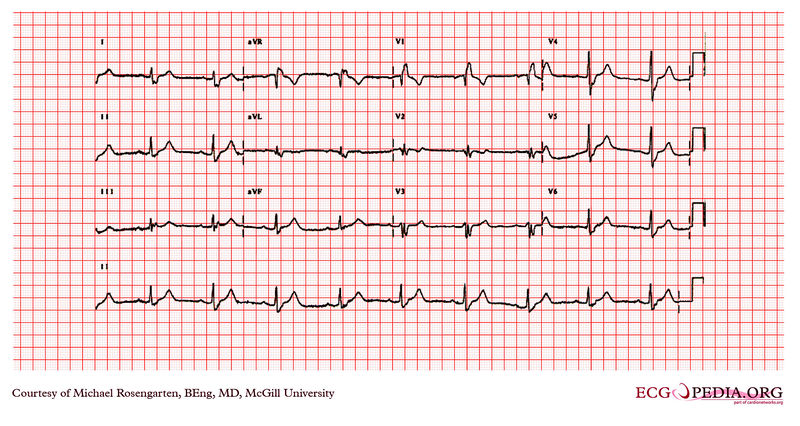
EKG below is a recording from an older man in the surgical intensive care unit. He was recovering from a motor vehicle accident where he sustained a chest injury from his seat belt. The rhythm is sinus rhythm with a prolonged p wave duration in lead III( >140ms) and a pronounced terminal negativity in V1 suggestive of left atrial abnormality. The QRS is wide with a duration of 137ms and a superior and right ward axis. There is an RSR in V1 and the S wave is greater than the R in V6. This is an unusual pattern for aberrance and is more in keeping with ventricular ectopy. In this case, this appears to be a right bundle branch block with a possible left posterior hemi-block.
Of note, in spite of this conduction disturbance the patient was able to sustain reentrant supraventricular tachycaridas requiring intravenous adenosine for termination.
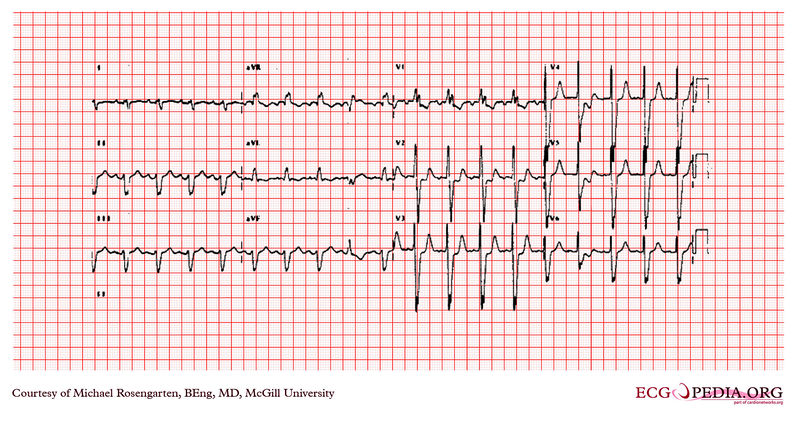
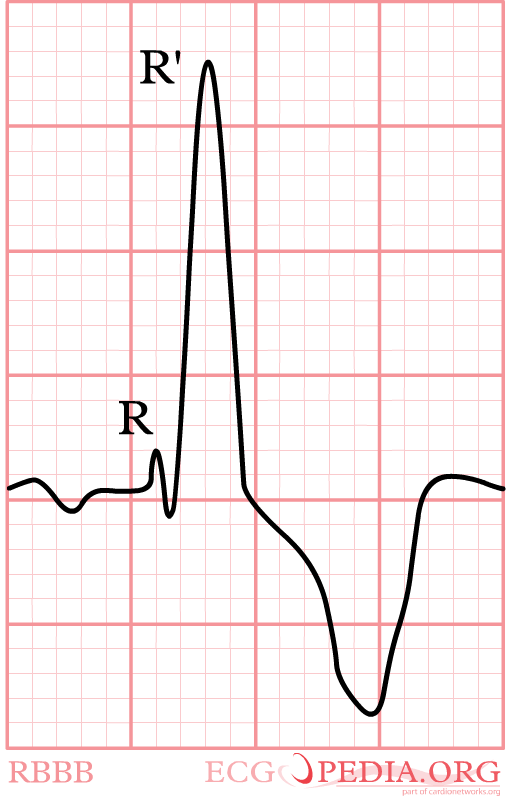 |
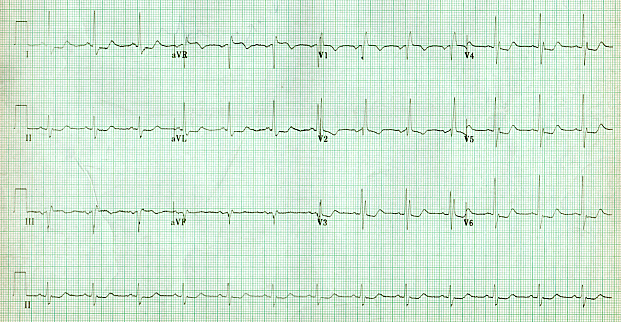 |
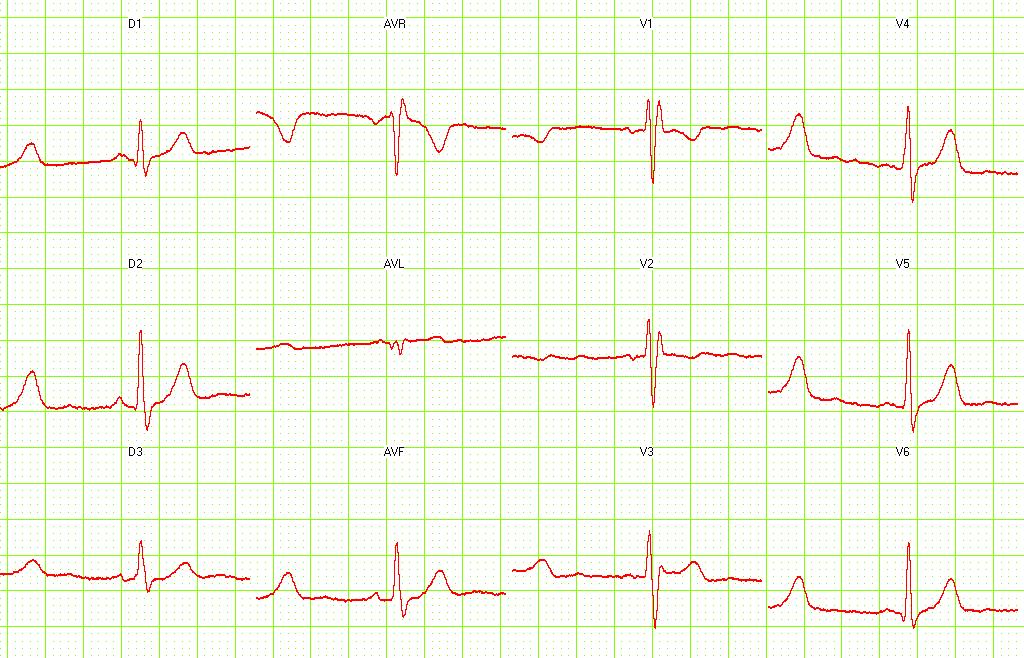 |
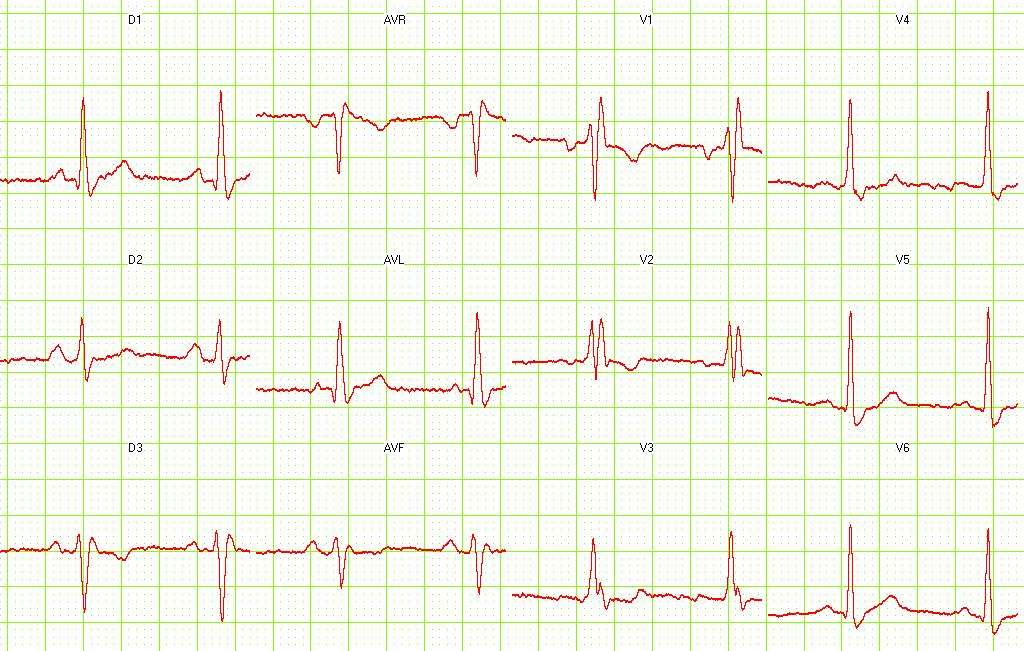 |
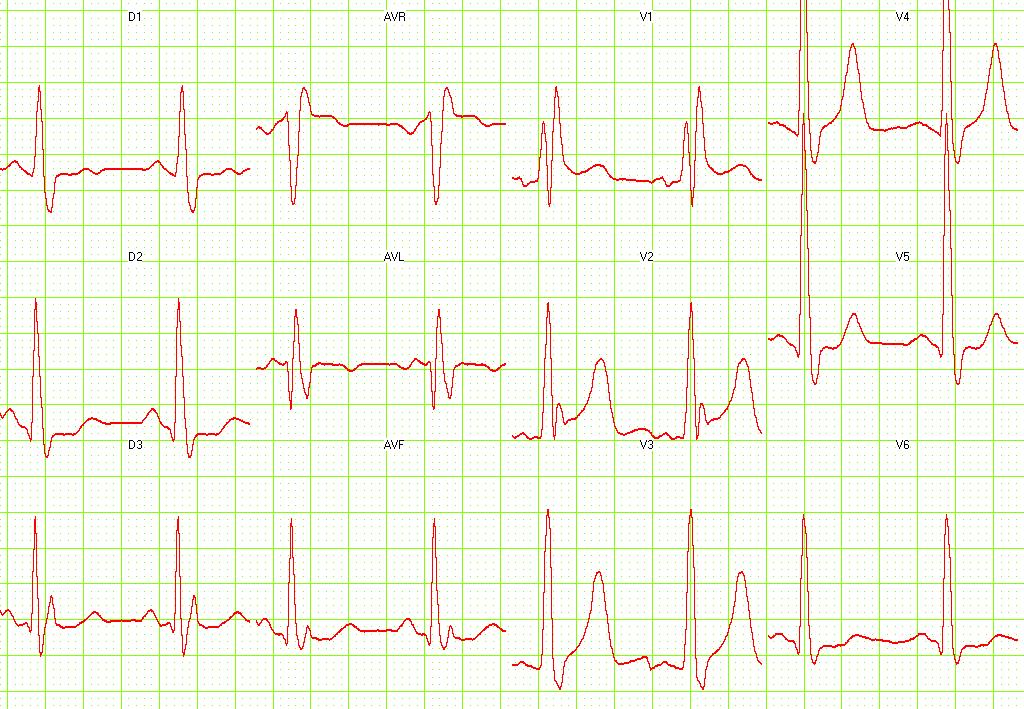 |
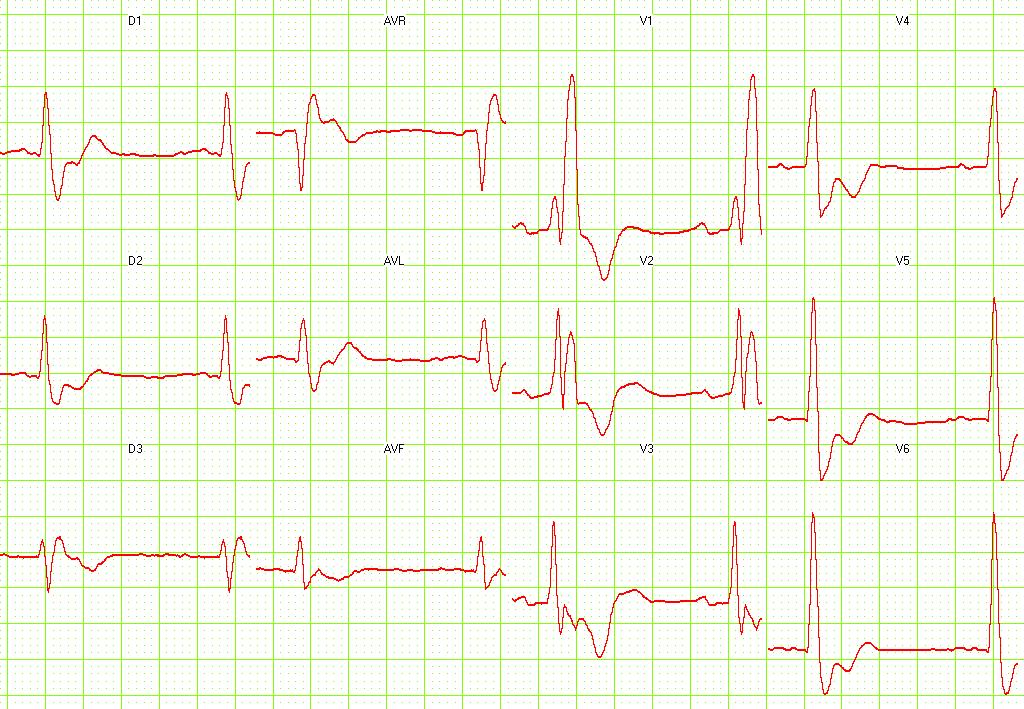 |
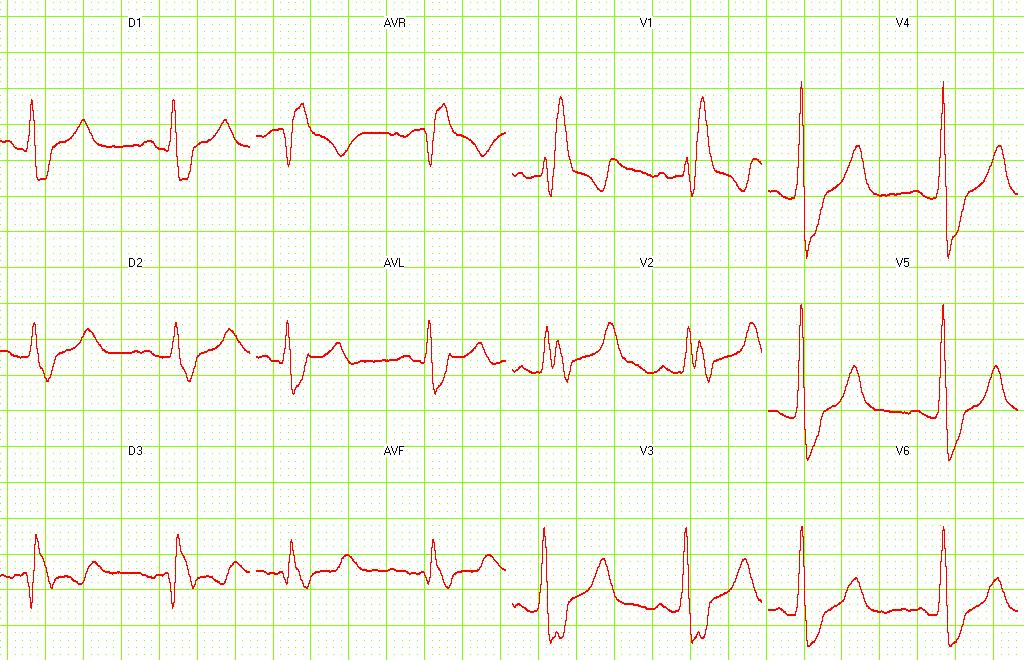 |
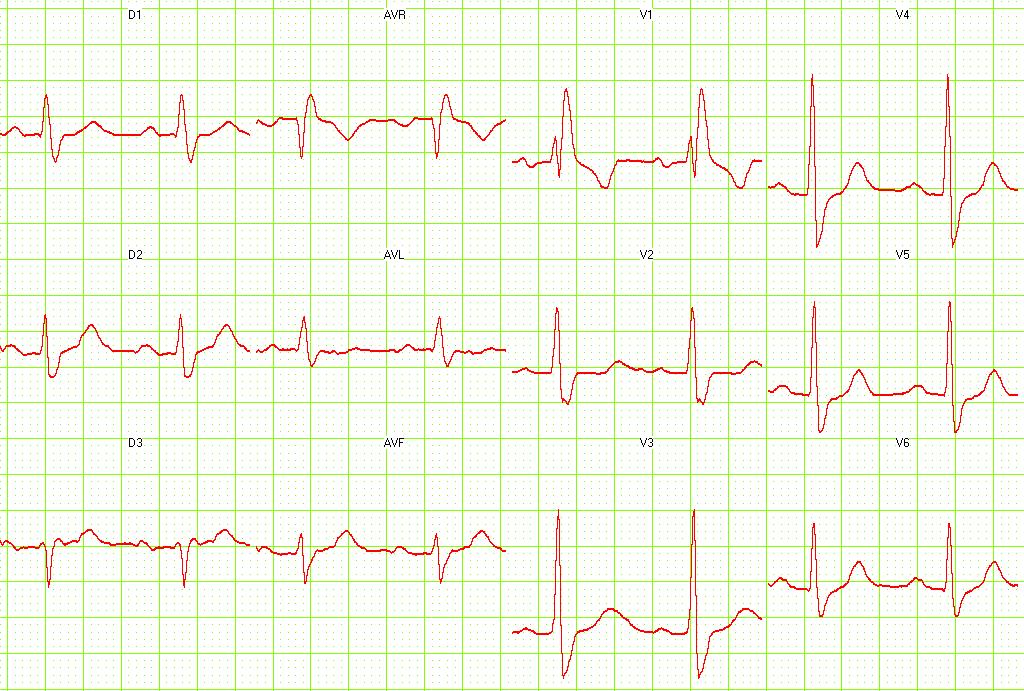 |
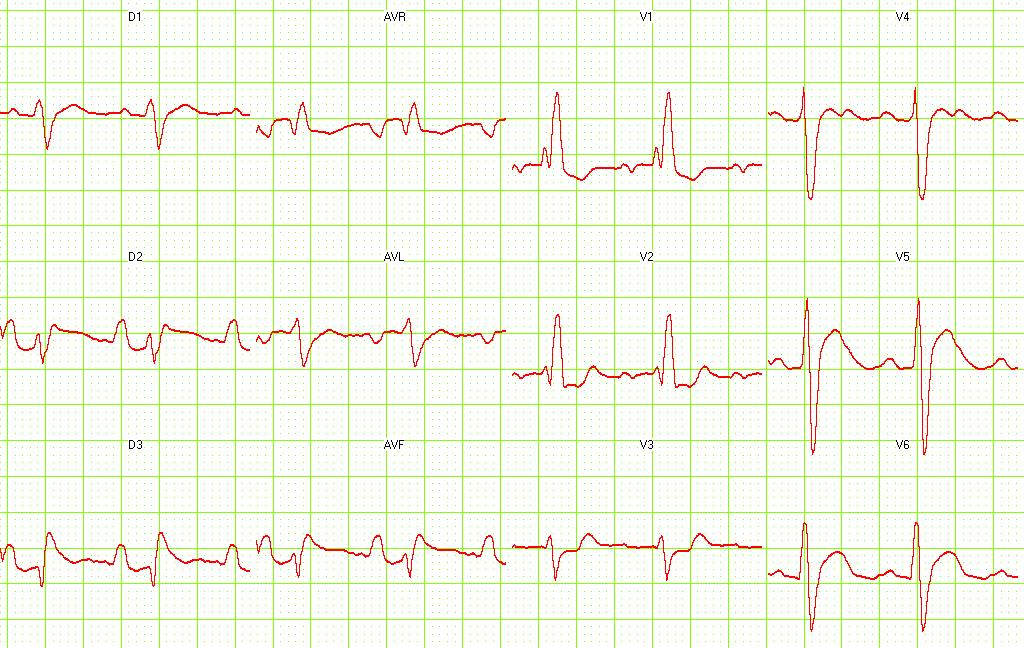 |
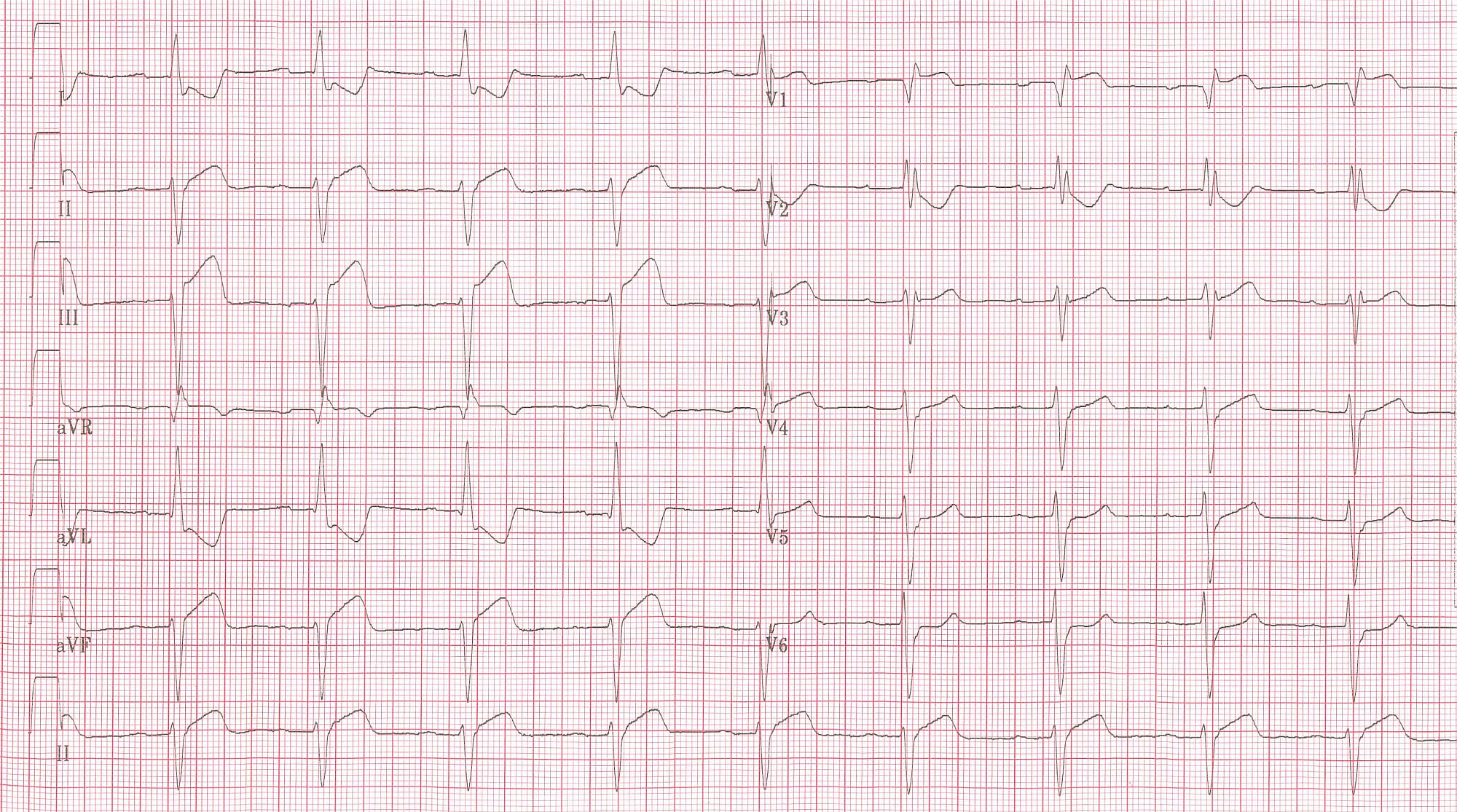 |
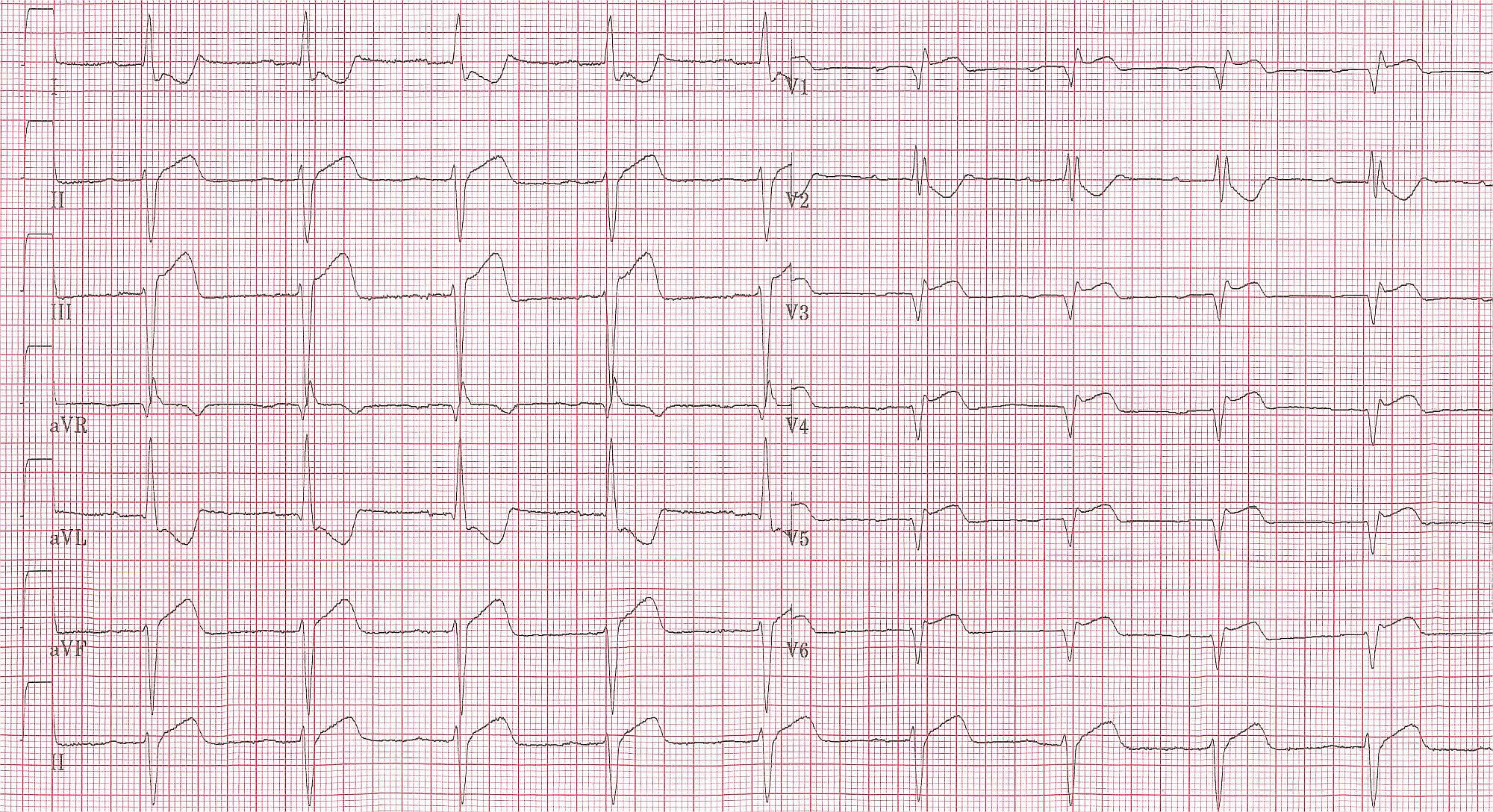 |
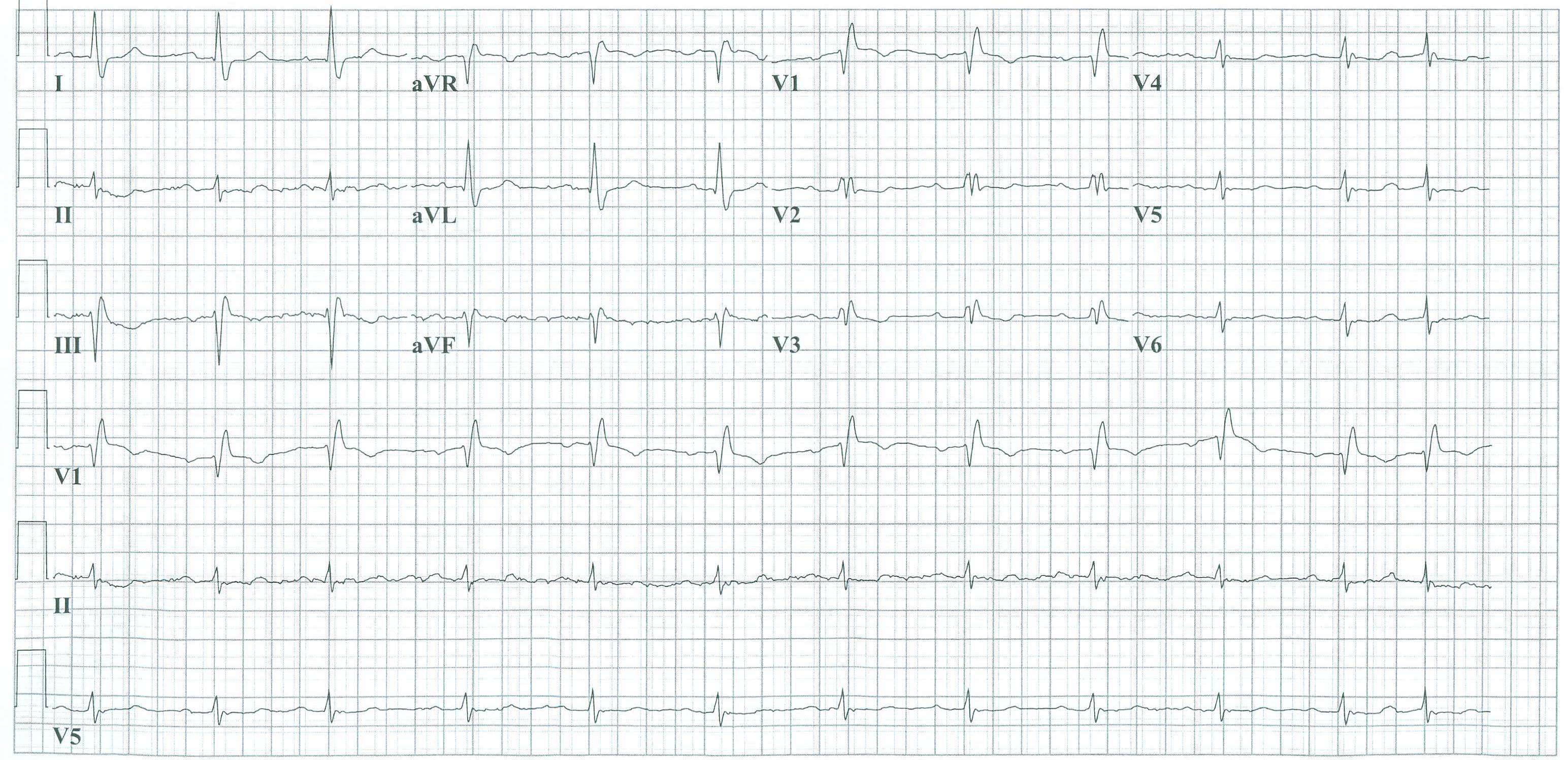 |
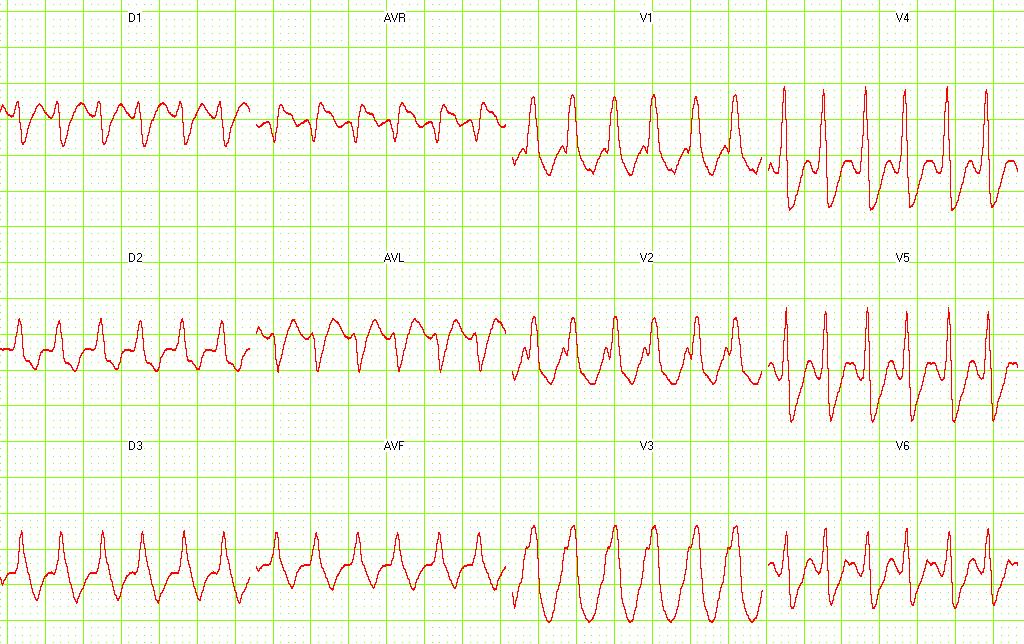 |
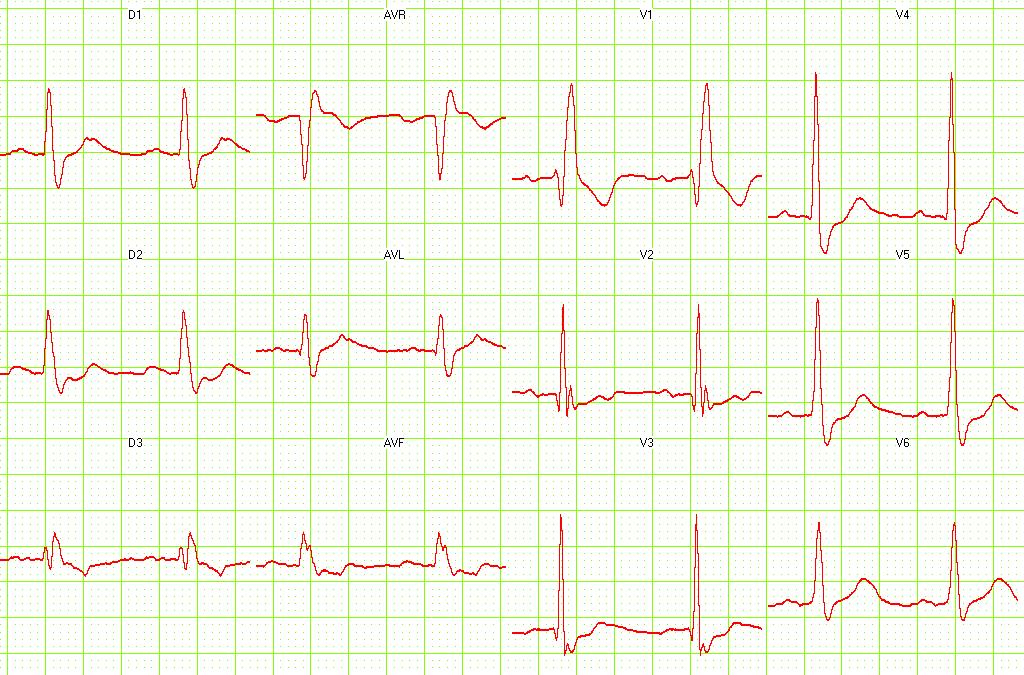 |
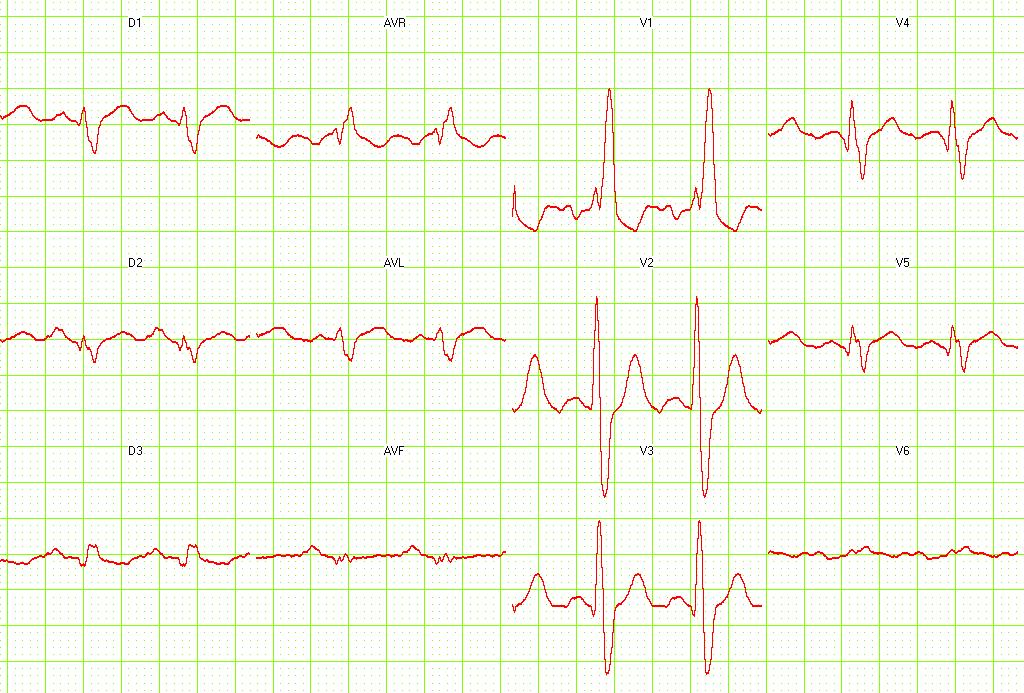 |
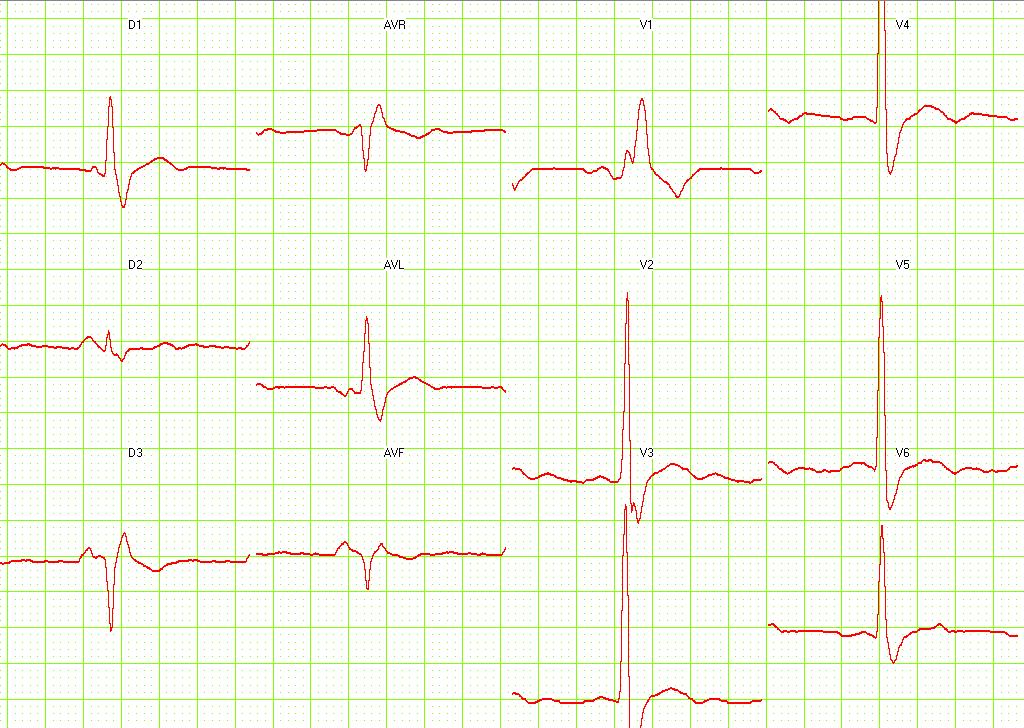 |
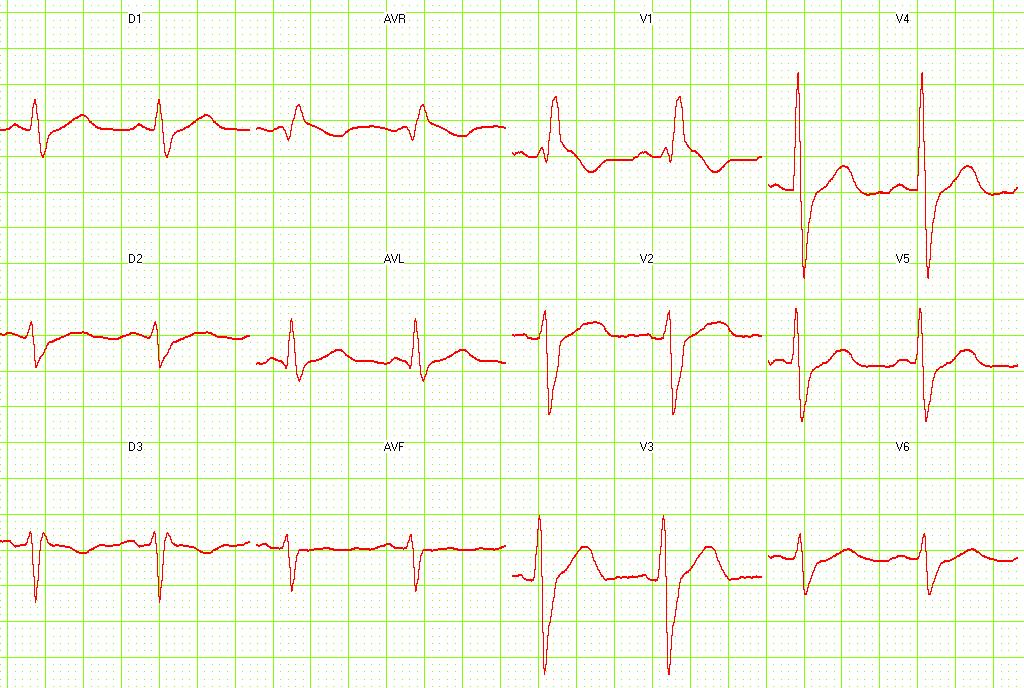 |
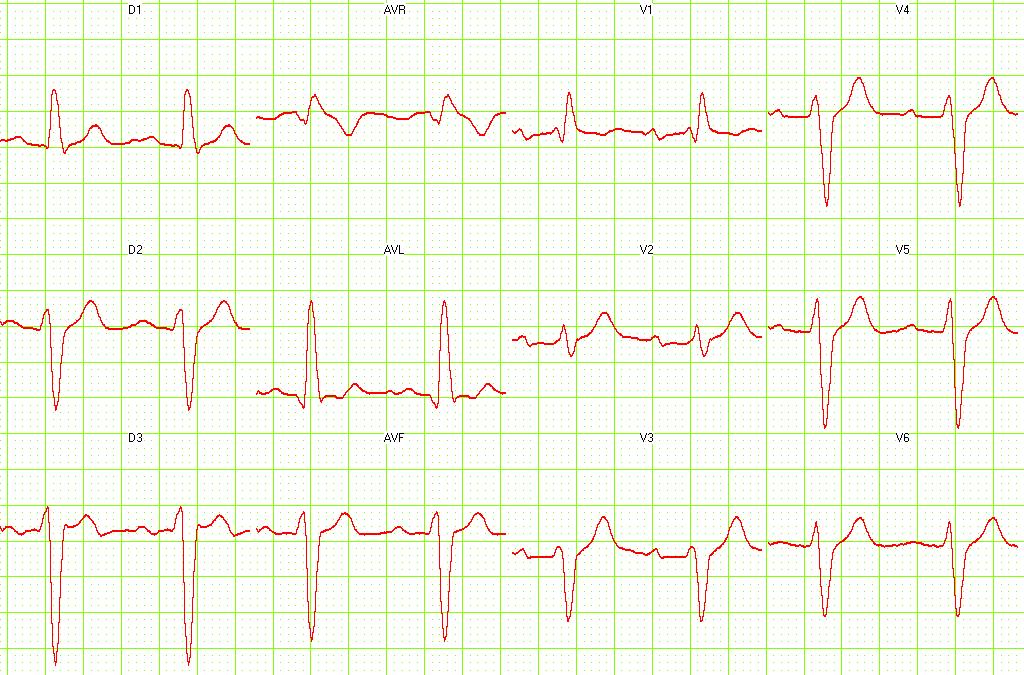 |
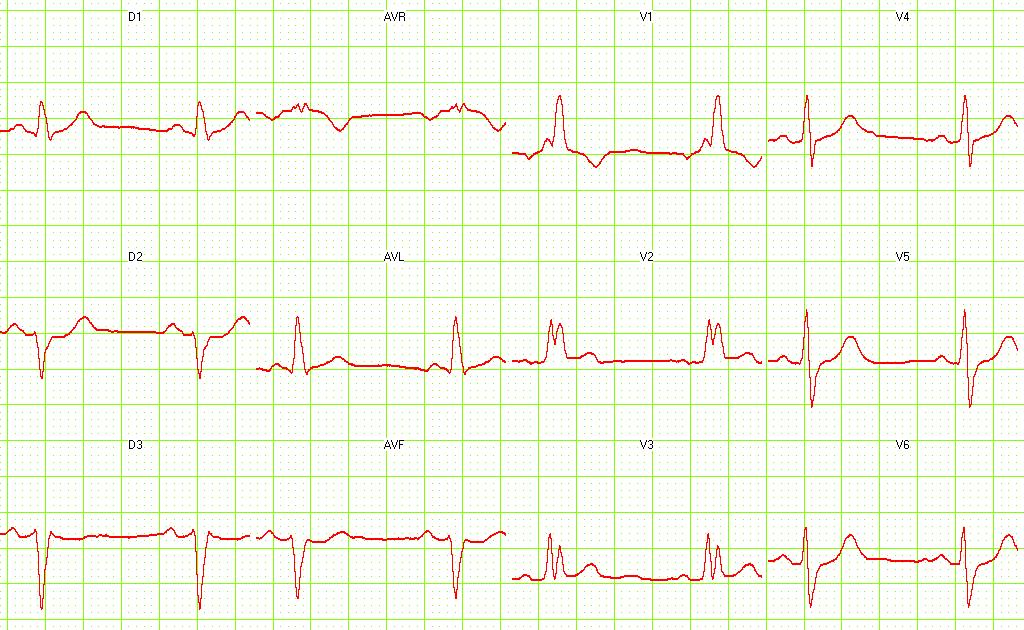 |
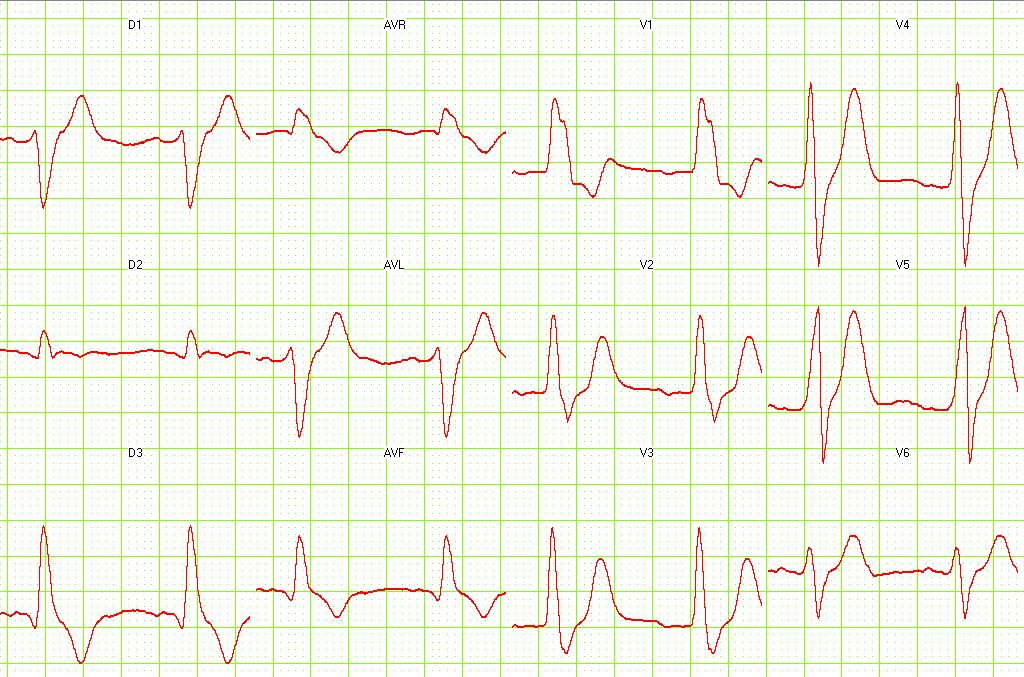 |
Animation of RBBB
{{#ev:youtube|EJUQKaDeAXg}}